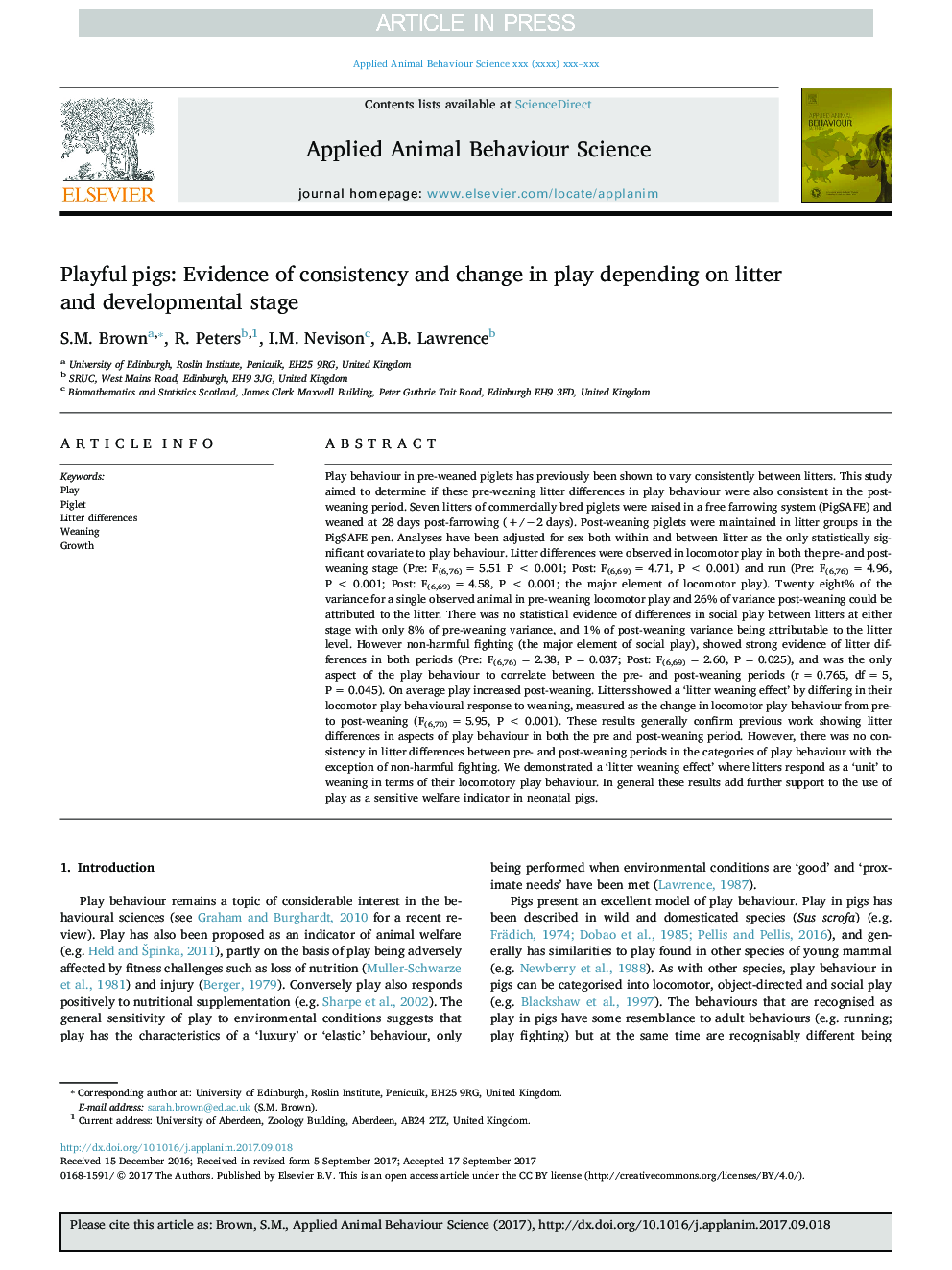| کد مقاله | کد نشریه | سال انتشار | مقاله انگلیسی | نسخه تمام متن |
|---|---|---|---|---|
| 8882862 | 1625308 | 2018 | 8 صفحه PDF | دانلود رایگان |
عنوان انگلیسی مقاله ISI
Playful pigs: Evidence of consistency and change in play depending on litter and developmental stage
ترجمه فارسی عنوان
خوک های شاد: گواهی انطباق و تغییر در بازی بسته به مرحله بستر و مرحله
دانلود مقاله + سفارش ترجمه
دانلود مقاله ISI انگلیسی
رایگان برای ایرانیان
کلمات کلیدی
بازی، بچه خوک، اختلاف لاین، شستن رشد
موضوعات مرتبط
علوم زیستی و بیوفناوری
علوم کشاورزی و بیولوژیک
علوم دامی و جانورشناسی
چکیده انگلیسی
Play behaviour in pre-weaned piglets has previously been shown to vary consistently between litters. This study aimed to determine if these pre-weaning litter differences in play behaviour were also consistent in the post-weaning period. Seven litters of commercially bred piglets were raised in a free farrowing system (PigSAFE) and weaned at 28 days post-farrowing (+/â2 days). Post-weaning piglets were maintained in litter groups in the PigSAFE pen. Analyses have been adjusted for sex both within and between litter as the only statistically significant covariate to play behaviour. Litter differences were observed in locomotor play in both the pre- and post-weaning stage (Pre: F(6,76) = 5.51 P < 0.001; Post: F(6,69) = 4.71, P < 0.001) and run (Pre: F(6,76) = 4.96, P < 0.001; Post: F(6,69) = 4.58, P < 0.001; the major element of locomotor play). Twenty eight% of the variance for a single observed animal in pre-weaning locomotor play and 26% of variance post-weaning could be attributed to the litter. There was no statistical evidence of differences in social play between litters at either stage with only 8% of pre-weaning variance, and 1% of post-weaning variance being attributable to the litter level. However non-harmful fighting (the major element of social play), showed strong evidence of litter differences in both periods (Pre: F(6,76) = 2.38, P = 0.037; Post: F(6,69) = 2.60, P = 0.025), and was the only aspect of the play behaviour to correlate between the pre- and post-weaning periods (r = 0.765, df = 5, P = 0.045). On average play increased post-weaning. Litters showed a 'litter weaning effect' by differing in their locomotor play behavioural response to weaning, measured as the change in locomotor play behaviour from pre- to post-weaning (F(6,70) = 5.95, P < 0.001). These results generally confirm previous work showing litter differences in aspects of play behaviour in both the pre and post-weaning period. However, there was no consistency in litter differences between pre- and post-weaning periods in the categories of play behaviour with the exception of non-harmful fighting. We demonstrated a 'litter weaning effect' where litters respond as a 'unit' to weaning in terms of their locomotory play behaviour. In general these results add further support to the use of play as a sensitive welfare indicator in neonatal pigs.
ناشر
Database: Elsevier - ScienceDirect (ساینس دایرکت)
Journal: Applied Animal Behaviour Science - Volume 198, January 2018, Pages 36-43
Journal: Applied Animal Behaviour Science - Volume 198, January 2018, Pages 36-43
نویسندگان
S.M. Brown, R. Peters, I.M. Nevison, A.B. Lawrence,
